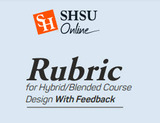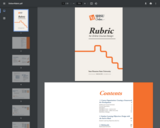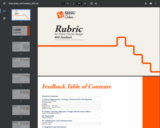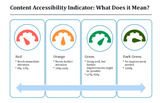The SHSU Online Course Design Rubric is used to guide and inform the course development process, as well as evaluate the design of any course which contains online components. It can be used whether the course is fully or partially online, flipped or web‐assisted face‐to‐face.
The Rubric was developed by a team of instructional designers and course development practitioners based on nationally recognized, research‐based quality assurance standards related to the essential components of online course design. This includes...
- General course information
- Presentation of course content
- Collaboration & Communication
- Assessment Strategies
- Course Technology
- Learner Support, and
- Accessibility
Not only is the rubric the primary instrument utilized at SHSU for the development and evaluation of online courses, but the tool can also be used as a self‐assessment instrument by instructors as a means to receive constructive feedback on the design of a course, and a means to identify and document effective online course design.
The SHSU Online Course Design Rubric has also been vetted by faculty who are actively involved in online teaching for SHSU. Use of the rubric to inform the development of distance education courses leads to multiple benefits, including...
- Improved student learning
- Ease of navigation of the course environments
- Reduced ambiguity for faculty and students
- More appropriate use of technology
Definition Online Live Course: 100% of instruction (lectures) and course contact hours occurring synchronously (live) online. An online live course is defined at SHSU as an online course with 100% of instruction (lectures) and course contact hours occurring synchronously (live) online. Students enrolled in an online-live course are required to participate in synchronous, online instruction and other course activities in real-time during scheduled class meeting times. Course materials, activities, and instructional assets will be stored in the learning management system.




















